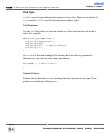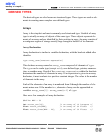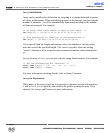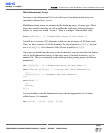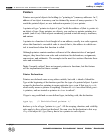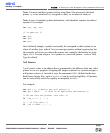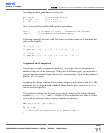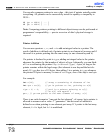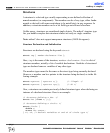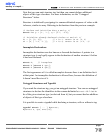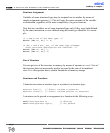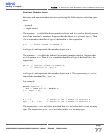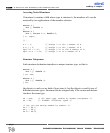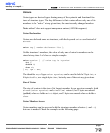
You can also compare pointers to zero value – this tests if pointer actually points
to anything. All pointers can be successfully tested for equality or inequality to
NULL:
if (pa == NULL) { ... }
if (pb != NULL) { ... }
Note: Comparing pointers pointing to different objects/arrays can be performed at
programmer’s responsibility — precise overview of data’s physical storage is
required.
Pointer Addition
You can use operators
+, ++, and += to add an integral value to a pointer. The
result of addition is defined only if pointer points to an element of an array and if
the result is a pointer pointing into the same array (or one element beyond it).
If a pointer is declared to point to
type
, adding an integral value to the pointer
advances the pointer by that number of objects of type. Informally, you can think
of
P+n as advancing the pointer P by (n*sizeof(
type
)) bytes, as long as the
pointer remains within the legal range (first element to one beyond the last ele-
ment). If
type
has size of 10 bytes, then adding 5 to a pointer to
type
advances
the pointer 50 bytes in memory. In case of void type, size of the step is one byte.
For example:
int a[10];
// array a containing 10 elements of int
int *pa = &a[0];
// pa is pointer to int, pointing to a[0]
*(pa + 3) = 6;
// pa+3 is a pointer pointing to a[3],
// so a[3] now equals 6
pa++;
// pa now points to the next element of array, a[1]
There is no such element as “one past the last element”, of course, but a pointer is
allowed to assume such a value. C “guarantees” that the result of addition is
defined even when pointing to one element past array. If
P points to the last array
element, P+1 is legal, but P+2 is undefined.
mikroC
- C Compiler for Microchip PIC microcontrollers
mikroC
making it simple...
72
MikroElektronika:
Development
tools
-
Books
-
Compilers
page



